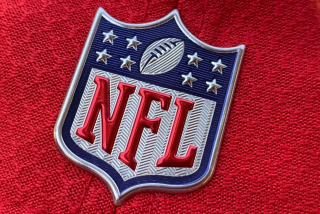Bowl’s Ad Prices Take a Dip
Super Bowl advertising rates are dropping for the second straight year, the first back-to-back decline and a sign that even the nation’s most-watched show cannot avoid the recession and growing competition from other media events.
The rate drop comes as advertisers are reassessing commitments to other widely watched broadcasts, including the Academy Awards and the upcoming Olympic Winter Games.
Rates for a 30-second spot in Sunday’s Fox network broadcast from New Orleans’ Superdome will slip below the $2-million average that CBS commanded last year, Fox executives said Wednesday.
The News Corp.-owned network has sold 95% of the commercial time available and expects to sell out its inventory before kickoff. Fox said earlier that it had trimmed its pregame show by 21/2 hours, to just more than four hours, because of the weak ad market.
Fox’s sales team also has been hampered by competition from a crush of media events, most notably the Winter Olympics, which begin Feb. 8 in Salt Lake City.
“Getting close to $2 million in this advertising environment is still pretty respectable,” said Lou D’Ermilio, Fox’s vice president of media relations.
The Super Bowl isn’t the only big-ticket attraction scrambling to court recession-wary advertisers. The U.S. Olympic Committee is jump-starting efforts to market the Olympic movement, and Advertising Age magazine reported Monday that the cost of a 30-second spot on ABC’s March 24 Academy Awards broadcast will slip below last year’s $1.3 million.
“There’s definitely not the same kind of fight” for advertisers to get on big-ticket broadcasts because of the stalled economy, said Connie Dotson, head of marketing and communications for Super Bowl halftime show sponsor ETrade Group Inc. Rather than simply signing on the dotted line, advertisers are carefully selecting alliances “where you’re going to get the biggest bang,” Dotson said.
Sears, Roebuck & Co. is among those picking and choosing its ad commitments. Despite its role as an Olympic supplier, Sears isn’t running advertising during NBC broadcasts of the Winter Games.
“February typically is not a big broadcast month for us,” said Sears spokeswoman Lee Antonio. Sears instead used print advertising in late December and early January to promote a contest offering customers a trip to the Salt Lake City games. Late last year American Express Co. opted not to renew its longtime sponsorship of the Academy Awards show.
“We’re moving toward sponsorship where we can build in special experiences for our cardholders,” said spokeswoman Judy Tenzer. One key example of that sponsorship model is the World Golf Championship; American Express can use its sponsorship relationship with Tiger Woods to reward cardholders.
The slow economy and the wealth of competing events translates into “some real opportunities” for advertisers, said Carolyn Bivens, the Los Angeles-based president and chief operating officer at media-buying firm Initiative Media North America.
But Bivens maintains that the two-year dip in Super Bowl commercial prices doesn’t necessarily signal serious problems for the Super Bowl broadcast. A “wild spike in pricing” generated by cash-rich dot-coms in 2000 pushed rates far beyond what the market could support. “Pricing started to come back to reality in 2001,” Bivens said.
Fox’s D’Ermilio maintains that Super Bowl advertising remains relatively strong compared with the overall broadcast market. Super Bowl rates soared by 67% between 1997 and 2000, D’Ermilio said, while prime-time rates on the Big Four networks rose by only 18%.
A handful of companies, including Volkswagen and Cingular Wireless, walked away from the Super Bowl after last year’s broadcast. Electronic Data Systems Corp., which advertised in the last three Super Bowl broadcasts, this year opted to run 50 commercials during NBC’s Olympic broadcast.
EDS Senior Vice President Don Uzzi described the Olympics as “wildly successful” for EDS, which ran funny spots that showed cowboys struggling to herd cats and squirrels running free in Pamplona.
Why shift? EDS’ new message about its services is “too complex” to fit into a single, 60-second spot, Uzzi said. “With the Olympics, we’ve got 17 days to bang home our message, and that’s very appealing to us.”
Strategy is as important for the more than two dozen advertisers suiting up for the big game as it is for the St. Louis Rams and the New England Patriots.
If advertisers are lucky, Sunday’s football broadcast will mirror the 2000 Super Bowl, when the Rams defeated the Tennessee Titans in a game that wasn’t decided until the final play. If they’re unlucky, the game will be a blowout like last year’s game won by the Baltimore Ravens, and viewers will be more worried about the supply of guacamole than the game.
Such Super Bowl veterans as Anheuser-Busch Cos., with 10 spots of 30 seconds, and Pepsi-Cola Co., with six 30-second spots, guaranteed themselves a strong showing by paying premiums to run most of their spots during the first half.
Several rookies also are making their Super Bowl debut with costly first-half commercials.
The Quizno’s sandwich chain purchased a single 30-second spot during the first quarter to kick off a national television advertising campaign. The relatively small chain, with 1,500 units, paid a premium because “the Super Bowl audience is right in the middle of our demographic,” said Quizno’s President Rick Schaden. “There will be 90 million of them, all in one place, and all there to watch the advertising.”
H&R; Block’s second-quarter commercial is a satirical look at the avalanche of tax code changes consumers must wade through this year. The firm hired the movie-making Coen brothers (“O Brother,” “Fargo”) to produce its spot, which features the Beatles’ “Taxman” in the soundtrack
For the sixth year in a row, Pizza Hut has purchased the last commercial spot before the coin toss. Phone orders peak just minutes before the game begins.
“It doesn’t make sense for us to be selling pizzas in the second half,” said spokeswoman Julie Hildebrand.
More to Read
The biggest entertainment stories
Get our big stories about Hollywood, film, television, music, arts, culture and more right in your inbox as soon as they publish.
You may occasionally receive promotional content from the Los Angeles Times.










